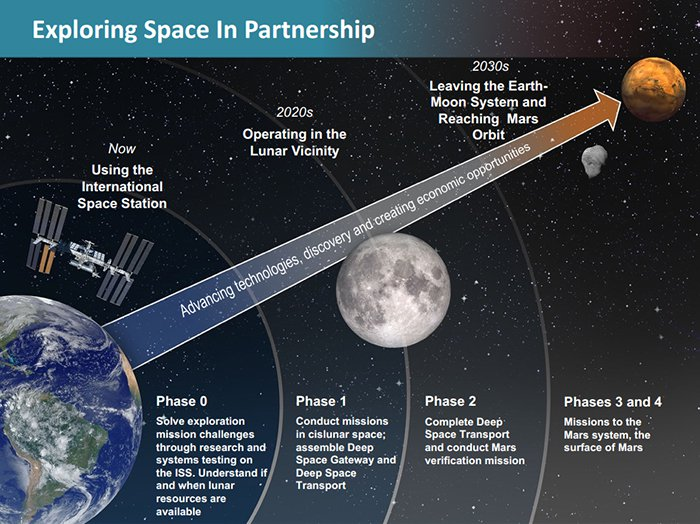ASTRONOMICAL: NASA reveals its 2020 fiscal budget request of $21 billion in hopes of returning to missions outside of Earth’s orbit.
By Roman McCree, Staff Writer
NASA revealed one of their largest requests for the 2020 fiscal year budget on 11 March 2019 at an event at Kennedy Space Center, coming in at $21 billion. The agency divided the budget up to $9.307 billion for human exploration and operations, $5.022 billion for deep space exploration systems, and $4.226 billion for low-Earth orbit and spaceflight operations. The Orion capsule and its heavy-lift rocket counterpart, central parts of the agency’s past lunar plans, set the stage for future ideas at this event. Although the main component of the agency’s plans in the past, it now has become an insignificant part as they shift their focus on other components that hopefully will get American footprints back on the moon. Their plan will revolve around one new concept: reusability. “We need to drive down cost. We need to increase access. We need to make spaceflight more available to more people,” NASA Administrator Jim Bridenstine said. At this event, Bridenstine pitched a “strong” budget to the president’s administration, falling just $500 million short of what they received in 2019. The agency’s new focus follows Trump’s Space Policy Directive 1, which was a change in national space policy aimed at returning astronauts to the moon, followed by missions to Mars and farther beyond.
With such a large request to satisfy their aspirations, NASA is easily able to divide their prospect budget to different programs. The budget has already called for $363 million to support commercial development of a lunar lander that would be able to carry cargo and astronauts, as well as surface the moon. Partnering with commercial groups is a major part in driving costs down for NASA, as many companies have already stepped up to the challenge. Some companies with such desires to help the dreams of NASA include Lockheed Martin and Amazon. Bridenstine references the success that had already happened when partnering with a “robust commercial marketplace” as he speaks of SpaceX’s success in testing its astronaut capsule at the International Space Station. These commercial developments will also play a key role in the advancement and progress of Gateway, a lunar International Space Station. This progress although postponed to mid-2020s, would serve as a halfway point for missions to the surface of the moon and eventually Mars.
While NASA has many hopes for new advancements due to their budget, they still preserve a small piece for their older programs such as Orion and Space Launch System (SLS) as well as exploration. These programs will expect a decrease in comparison to their 2019 budget, but will still receive $1.78 billion with the current proposal. In regards to planetary science, NASA will allocate $2.6 billion, with about $600 million of it going toward a mission to Jupiter’s moon, Europa, which is expected to launch in 2023. With new technology and advancements on the rise every day, NASA sees the increasing need to expand our horizons beyond earth. “The moon is the proving ground, Mars is the horizon,” Bridenstine said. This requested budget for 2020 will allow America to quickly get its name back on the lunar map. NASA’s new budget along with its precise, step-by-step plan will allow the agency to fulfill the nation’s long-awaited return to space.

